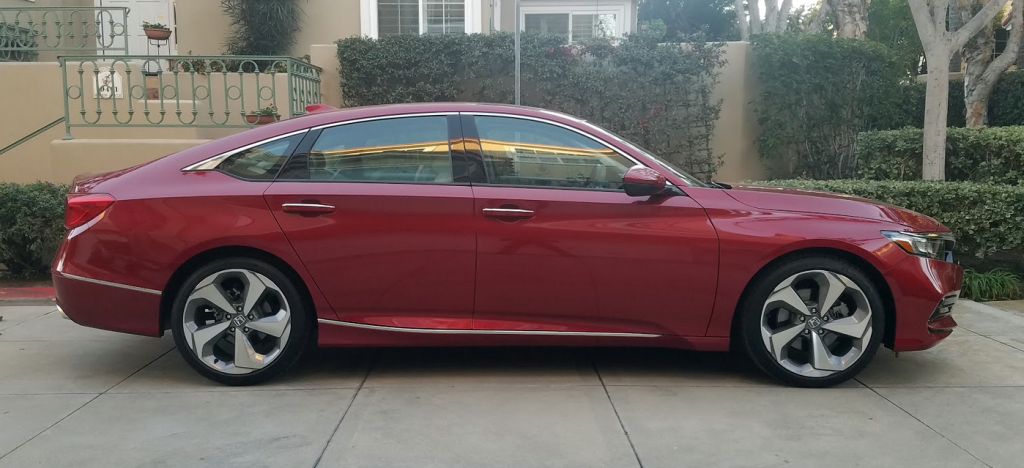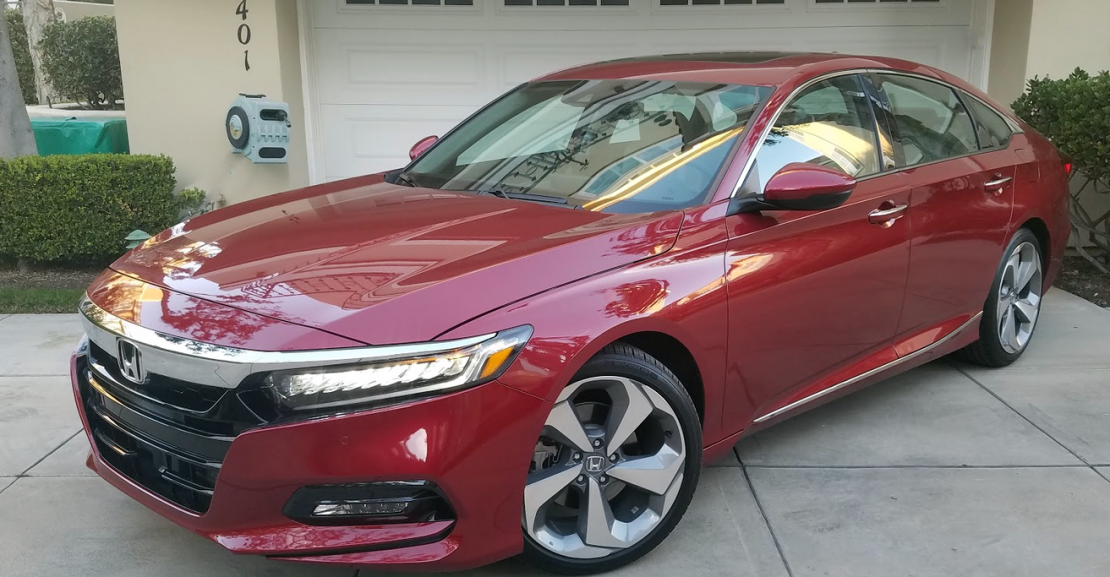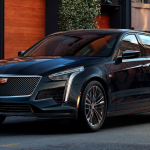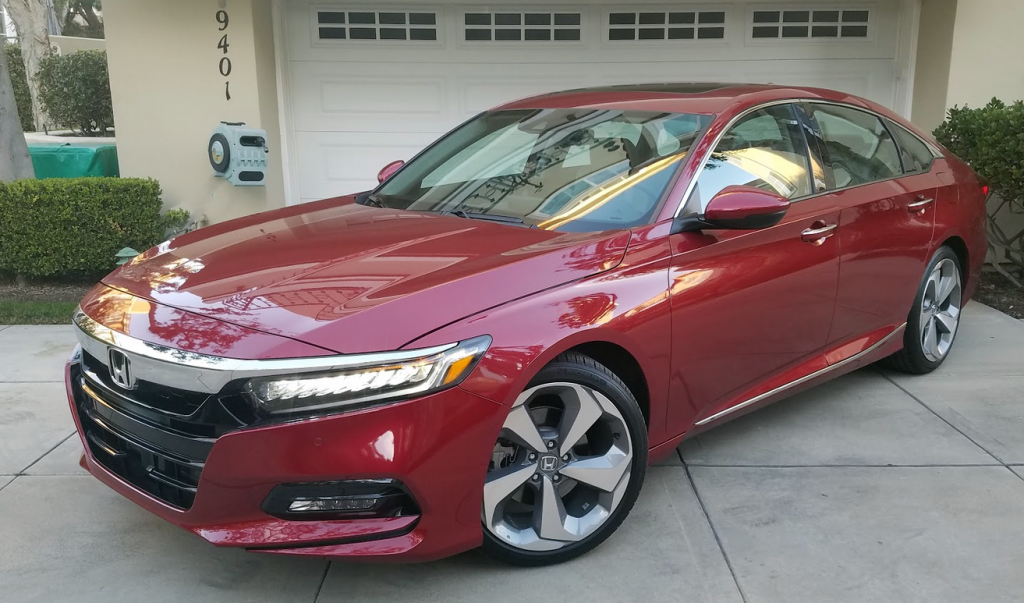
 2018 Honda Accord Touring 1.5T
2018 Honda Accord Touring 1.5T
Class: Midsize Car
Miles driven: 376
Fuel used: 12.2 gallons
Real-world fuel economy: 30.8 mpg
Driving mix: 40% city, 60% highway
EPA-estimated fuel economy: 29/35/31 (city, highway, combined)
| CG Report Card | |
|---|---|
| Room and Comfort | A- |
| Power and Performance | B |
| Fit and Finish | B+ |
| Fuel Economy | A- |
| Value | A |
| Report-card grades are derived from a consensus of test-driver evaluations. All grades are versus other vehicles in the same class. Value grade is for specific trim level evaluated, and may not reflect Consumer Guide's impressions of the entire model lineup. | |
| Big & Tall Comfort | |
| Big Guy | A- |
| Tall Guy | A- |
| Big & Tall comfort ratings are for front seats only. "Big" rating based on male tester weighing approximately 350 pounds, "Tall" rating based on 6'6"-tall male tester. | |
Base price: $33,800 (not including $890 destination charge)
Options on test vehicle: none
Price as tested: $34,690
Quick Hits
The great: Excellent rear-seat space, fine ride and handling composure
The good: Pleasant interior trimmings, good selection of comfort and technology features
The not so good: Oversensitive object-detection sensors occasionally give false warnings, Touring models’ 19-inch wheels take a slight toll in ride quality
More Accord price, availability, and crash-test information
Damon Bell
Honda’s deft redesign of its benchmark midsize sedan has made some pretty big waves among automotive journalists, and for good reason. In a new-vehicle marketplace shifting quickly to crossover SUVs, the tenth-generation Accord shows just how compelling a traditional midsize car can be. The 2018 Accord recently nabbed North American Car of the Year honors, and we at Consumer Guide put it on our list of 2018 Best Buys.
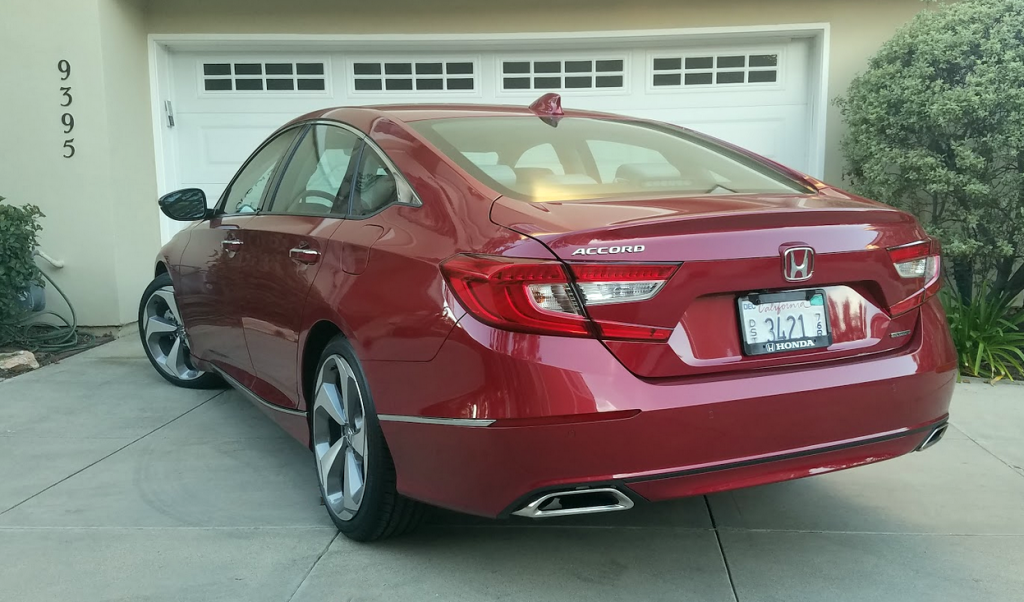
Test Drive: 2018 Honda Accord Touring 2.0T
And now that we’ve had an Accord with the base engine—a turbocharged 1.5-liter 4-cylinder—through our fleet and measured our own fuel economy, we’re even more impressed. We tested a Touring 1.5T model over the course of a week in sunny Southern California, where we had ample opportunity to put the powerplant through its paces. (You can check out our test-drive review of the Touring 2.0T model here and our Accord First Spin report here.)
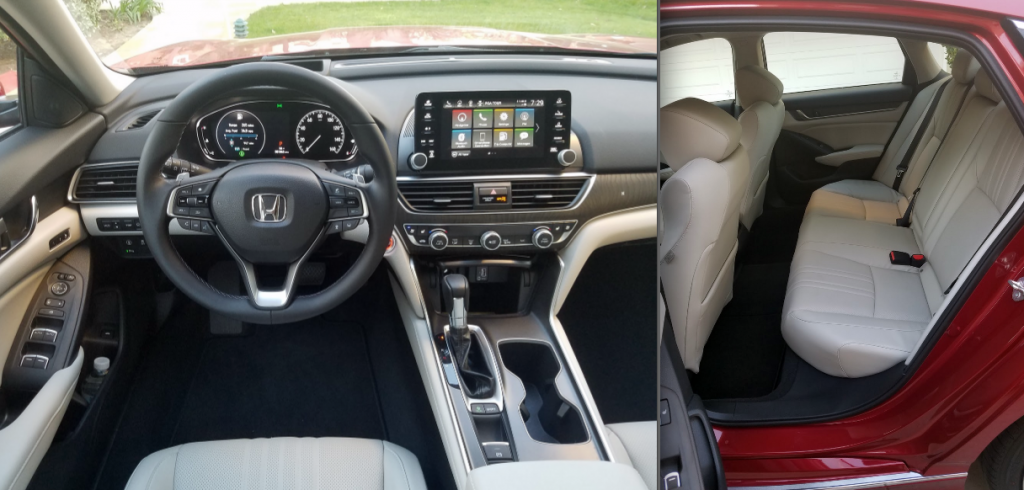
The 1.5T’s 192-horsepower rating is one of the highest in the midsize-sedan segment, and the engine feels every bit that strong from behind the wheel. Though it’s not particularly snappy off the line, the power builds smoothly and satisfyingly once underway. We encountered more steep grades and climbs in our Southern California travels that we typically do in our Chicagoland tests, and the 1.5T engine handled them with aplomb.
Quick Spin: 2017.5 Mazda 6 i Grand Touring
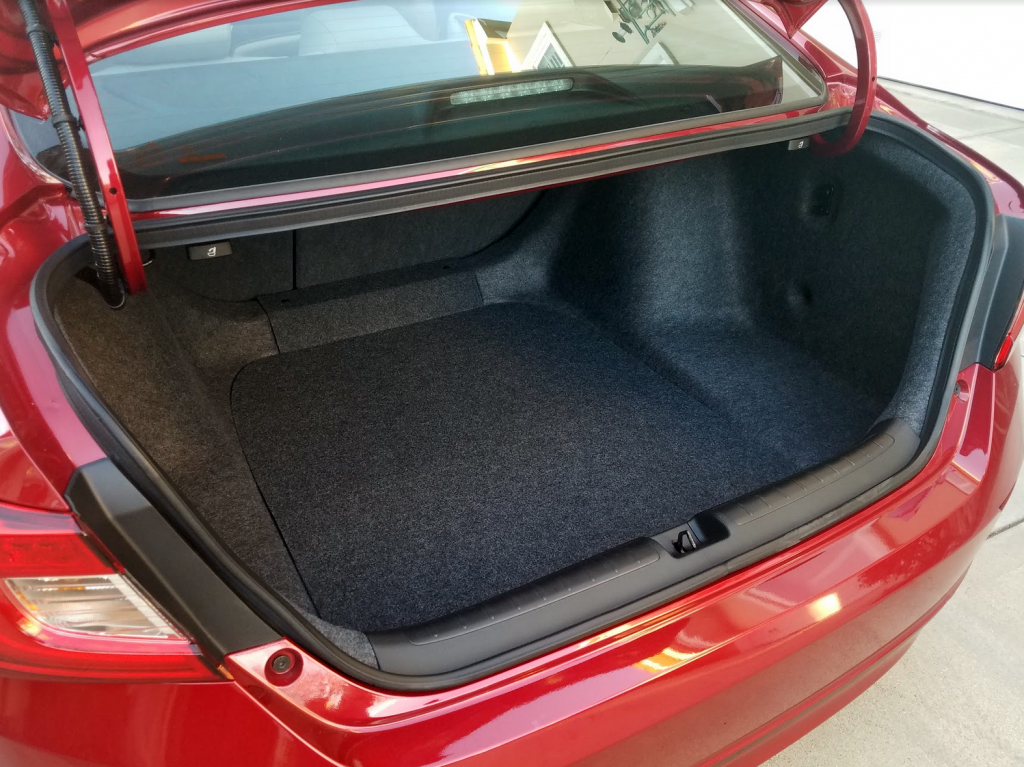
The 1.5’s continuously variable transmission (CVT) is especially refined. The Accord CVT uses a “G-design” shift logic that mimics the “stepped” gears of a traditional automatic transmission, so there is a more linear feel during acceleration—and almost none of the bothersome high-rpm droning noise from the engine that’s characteristic of many CVTs.
Accord Touring models feature both ECON and SPORT drive-mode buttons, which alter the driving personality. ECON dials in softer throttle response and changes climate-control settings for greater efficiency. SPORT mode dials in sharper throttle response and higher-rpm “shift” points, as well as a firmer suspension and steering feel (more on that below).
Unless you really have a need for speed, the 1.5T engine should be more than sufficient for your needs. The Accord’s available 252-hp 2.0T four-cylinder is also a fantastic, gutsy engine that nets another 60 horsepower over the 1.5, but it’s significantly pricier ($2000 more on comparably equipped models) and significantly thirstier too. The 2.0T’s EPA ratings of 22 mpg city/32 highway/ 26 combined are respectively 7, 3, and 5 mpg less efficient than the 1.5’s. Our own fuel-economy numbers were very much in line with the EPA estimates: In a similar mix of city/highway driving, we averaged 25.8 mpg in our test of a Touring 2.0T, and 30.8 with this Touring 1.5T. Also, note that Accord LX, EX, and EX-L models are EPA-rated with slightly better fuel-economy numbers than their Sport and Touring siblings with either the 1.5 or the 2.0 engine.
Regardless of engine, driving personality is an Accord strong point. The steering feel is smooth and direct. Ride quality is nicely composed overall, but the Touring models’ 19-inch wheels and low-profile tires cause a bit more impact harshness over big bumps and ruts. Tourings also come with an Adaptive Damper System that can uses various sensors and a microprocessor to adapt individual wheels to road conditions in milliseconds. The ADS system is also adjustable for sharper handling via the SPORT drive-mode button, but we didn’t notice a big difference from the normal setting.
The Accord’s all-around visibility is excellent. The windows are large, the roof pillars are thin, and the beltline is commendably low. The view out the windshield is panoramic, aided by a relatively low hoodline and a good seating position. However, that seating position is also quite low—especially for shoppers who may have grown accustomed to the higher, “step-in” seating height of crossover SUVs. By comparison, entry and exit in a Honda Accord is something of a “drop in, climb out” affair.
Test Drive: 2018 Toyota Camry Hybrid XLE
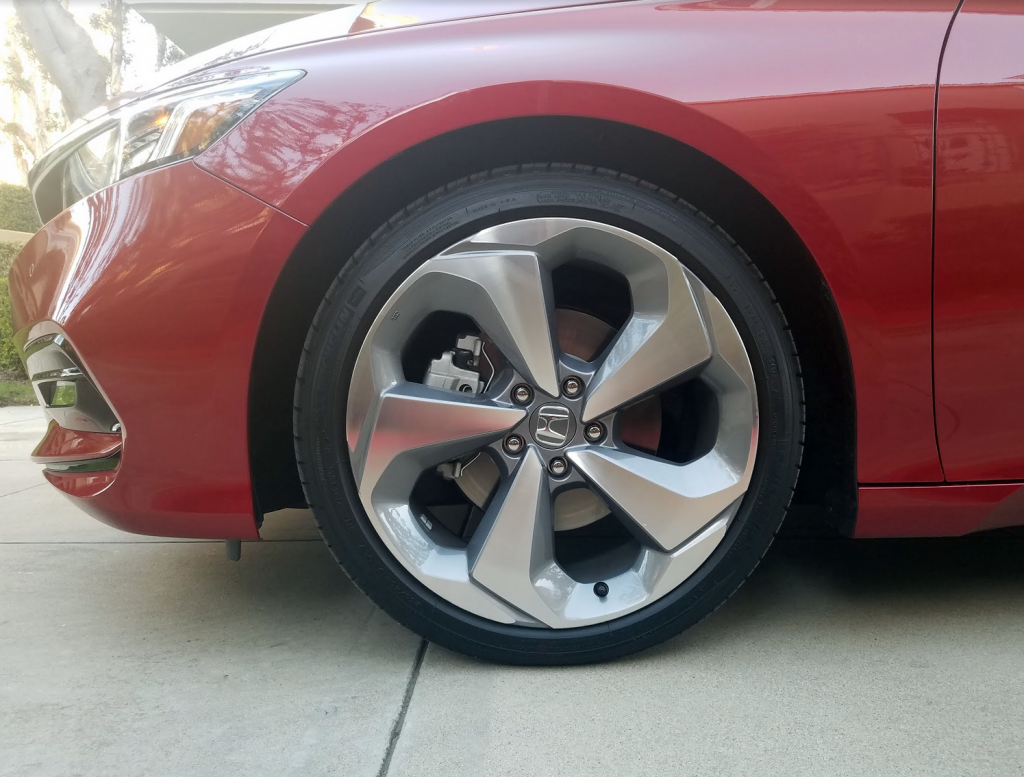
Passenger space is quite generous in both the front and rear seats. Rear legroom is great, though the sloped roofline can compromise headroom a bit for extra-tall passengers. I’m 6’6”, and I could sit in the back seat in comfort even when the front seats were adjusted all the way back. However, the back seat does have its limitations; with my sons’ booster seat and convertible car seat installed, their petite grandmother couldn’t fit in the middle of the back seat between them—something she can do with relative ease in her 15-year-old Toyota Camry.
Trunk space is also generous, though we were annoyed by the lack of a proper grab handle to close the trunklid. This might be nitpicky, but without a handle (or at least a sufficient depressed “pocket”) on the inside of the lid, you’re stuck slamming the trunk shut from the outside—which can be messy if the car is dirty, wet, or both. (Note that the 2018 Toyota Camry and Hyundai Sonata have skimped on this detail as well.)
We’re fans of Honda’s latest Display Audio infotainment system, which debuted in the redesigned-for-2018 Odyssey minivan. It has an 8-inch high-resolution screen with extra-large virtual buttons that are easy to see and use while driving, and it also features Apple CarPlay/Android Auto functionality and smartphone-like pinch-and-swipe capability. We appreciated the Touring’s standard heated and ventilated front seats and heated rear seats, though we also wished for a heated steering wheel—the top-line Hyundai Sonata Limited offers one in an option package.
It’s great that all Accords come standard with the Honda Sensing suite of safety features—namely forward collision warning and mitigation, lane-departure warning and mitigation, lane-keep assist, adaptive cruise control, and road-sign recognition. However, the forward object-detection/park-assist sensors are apparently calibrated to the “hair-trigger” setting; on more than one occasion we experienced some annoying false-positive warnings when the vehicle was sitting completely stationary at a stop light, and wasn’t being encroached upon by anything. We’ve experienced these erroneous warnings in other 2018 Accords as well.
Still, taken as a whole, the 2018 Honda Accord is one of the nicest mainstream-brand midsize sedans we’ve ever driven—at least in top-line Touring trim. If you haven’t completely jumped ship to the SUV camp, an Accord should be on your family-vehicle shopping list.
